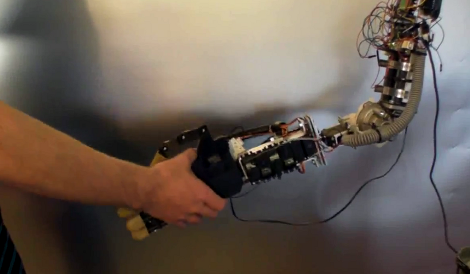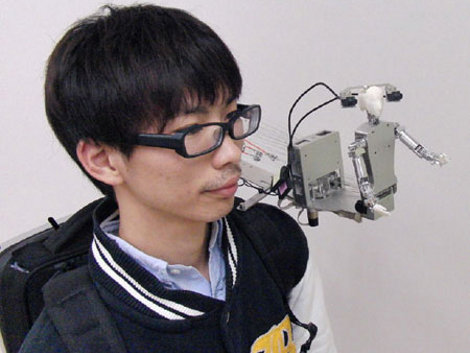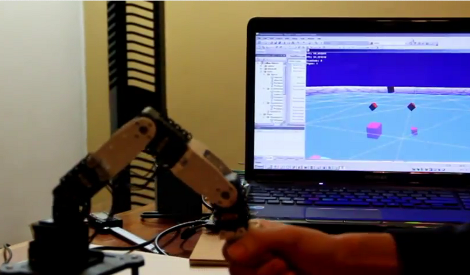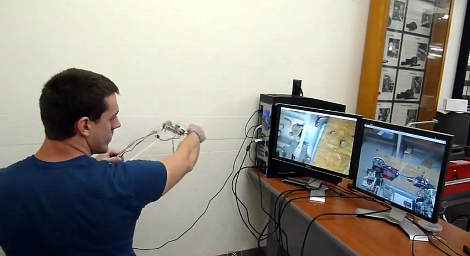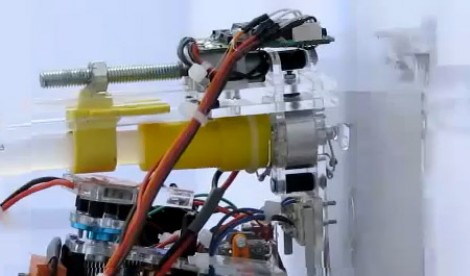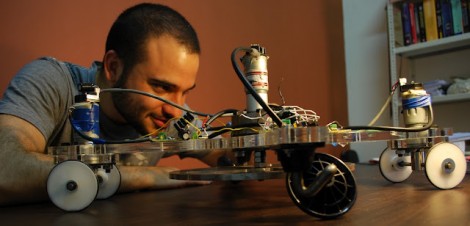
This robot uses the concept of a snakeboard for getting around. [Sevag Babikian] built the project, and has gone out of his way to explain how it works.
We’d recommend skimming over his explanation, but it was the video after the break that made all things clear to us. There is a large fly-wheel at the center. This is not continuously rotating, but oscillates a few inches in either direction. This inertial change shifts the center of gravity for the entire frame, causing motion. By oscillating the front and rear axles at the appropriate time the beast can move forward in a surprisingly straight line.
It’s doing this with just three motors. [Sevag] speculates that with further testing and refinement this could be a very efficient way to move the bot around. We have our doubts about that, but we are mesmerized by the undulations and how well they really do propel the thing along.
Continue reading “Shakerbot Leverages Inertial For Locomotion”

